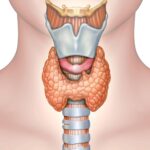- Home
- GYNECOLOGY/OBSTETRICS
- Ectopic pregnancy

Ectopic pregnancy is a potentially life-threatening condition where a fertilized ovum implants outside the uterine cavity. The most common site is the fallopian tube (tubal pregnancy), but it can also occur in other locations such as the ovary, cervix, or abdominal cavity.
Epidemiology:
- Ectopic pregnancies account for about 1-2% of all pregnancies.
- Leading cause of maternal morbidity and mortality in the first trimester.
- Risk factors include a history of pelvic inflammatory disease (PID), previous ectopic pregnancy, tubal surgery, intrauterine device (IUD) usage, assisted reproductive technology, and smoking.
Pathophysiology:
The normal path for a fertilized egg is to travel from the fallopian tube to the uterus, where it implants in the endometrial lining. In an ectopic pregnancy, this process is disrupted due to factors such as:
- Tubal Damage: Inflammation, infection, or surgical changes can impede the ovum’s passage.
- Hormonal Factors: Abnormal levels of hormones may affect tubal motility.
- Embryonic Factors: Rapidly dividing trophoblastic cells can abnormally invade the fallopian tube.
Sites of Ectopic Pregnancy:
- Tubal (95-97%):
- Ampullary (70% of tubal cases)
- Isthmic (12%)
- Fimbrial (11%)
- Interstitial (2-3%)
- Ovarian (3%): Implantation occurs on the ovary.
- Cervical (0.1%): Implantation occurs within the cervical canal.
- Abdominal (1%): Implantation occurs within the abdominal cavity.
- Heterotopic Pregnancy: Coexistence of an intrauterine and an ectopic pregnancy, more common with assisted reproduction techniques.
Clinical Presentation:
- Symptoms:
- Abdominal pain (usually unilateral) and pelvic pain.
- Vaginal bleeding or spotting.
- Amenorrhea (missed period).
- Symptoms of ruptured ectopic pregnancy: Severe abdominal pain, shoulder tip pain (from diaphragmatic irritation due to blood), dizziness, syncope, or signs of hypovolemic shock (tachycardia, hypotension).
- Signs:
- Abdominal tenderness, adnexal tenderness, or a palpable adnexal mass.
- Cervical motion tenderness on bimanual examination.
Diagnosis:
- Transvaginal Ultrasound (TVUS):
- First-line imaging modality.
- An empty uterus with an adnexal mass or free fluid in the pelvis is highly suggestive of an ectopic pregnancy.
- A gestational sac or yolk sac outside the uterine cavity confirms the diagnosis.
- Quantitative Beta-Human Chorionic Gonadotropin (β-hCG):
- Normally doubles every 48-72 hours in a viable intrauterine pregnancy.
- In ectopic pregnancies, β-hCG levels may rise more slowly, plateau, or decline.
- The “discriminatory zone” is the β-hCG level above which an intrauterine pregnancy should be visible on TVUS (typically 1,500-2,000 mIU/mL). If β-hCG is above this level without evidence of an intrauterine pregnancy on TVUS, ectopic pregnancy is likely.
- Culdocentesis (rarely used):
- Aspiration of non-clotting blood from the pouch of Douglas suggests hemoperitoneum.
- Laparoscopy:
- Both diagnostic and therapeutic, particularly in unstable patients.
Management:
1. Expectant Management:
- Suitable for selected asymptomatic patients with falling β-hCG levels (<1,000 mIU/mL) and no signs of tubal rupture.
- Requires close monitoring of β-hCG levels until they reach non-detectable levels.
2. Medical Management:
- Methotrexate (MTX) Therapy:
- Folic acid antagonist that inhibits DNA synthesis in rapidly dividing cells.
- Single-dose protocol: 50 mg/m² intramuscularly on Day 1, with β-hCG levels monitored on Days 4 and 7. If β-hCG does not decline by ≥15%, a second dose may be administered.
- Multi-dose protocol: 1 mg/kg on Days 1, 3, 5, and 7, with leucovorin (0.1 mg/kg) administered on alternate days.
- Contraindications: Hemodynamically unstable, evidence of rupture, significant hepatic or renal dysfunction, breastfeeding, or active lung disease.
- Criteria for Methotrexate Therapy:
- Hemodynamically stable, unruptured ectopic pregnancy.
- β-hCG <5,000 mIU/mL.
- No fetal cardiac activity on TVUS.
- Ectopic mass size <3-4 cm.
3. Surgical Management:
- Indications: Hemodynamic instability, ruptured ectopic pregnancy, or contraindication to methotrexate.
- Procedures:
- Salpingostomy: Incision made to remove the ectopic pregnancy while preserving the fallopian tube.
- Salpingectomy: Complete removal of the affected fallopian tube, often performed if the tube is damaged.
- Laparotomy: Emergency surgical approach in unstable patients with a large hemoperitoneum.
Post-Treatment Monitoring:
- β-hCG Monitoring: Should be followed weekly until non-detectable levels are achieved, indicating the resolution of the ectopic pregnancy.
- Rh Immunoglobulin Administration: Administer to Rh-negative patients to prevent isoimmunization.
Complications:
- Tubal Rupture: Can lead to significant intra-abdominal hemorrhage, shock, and even death if untreated.
- Recurrent Ectopic Pregnancy: Higher risk, especially if tubal damage persists.
- Infertility: Due to loss of tubal function or associated pelvic disease.
Prevention:
- Early Diagnosis and Treatment of PID: Reduces the risk of tubal damage.
- Appropriate Use of Assisted Reproductive Technologies (ART): Close monitoring of ART pregnancies for early detection.
- Contraception: Avoiding pregnancy until risk factors for ectopic pregnancy (e.g., active PID) are managed.
Summary:
Ectopic pregnancy requires a high index of suspicion, especially in women of reproductive age presenting with abdominal pain and vaginal bleeding. Early diagnosis and appropriate management are essential to reduce morbidity and improve outcomes. The choice of treatment—expectant, medical, or surgical—depends on the patient’s clinical stability, β-hCG levels, and the size and location of the ectopic pregnancy.












